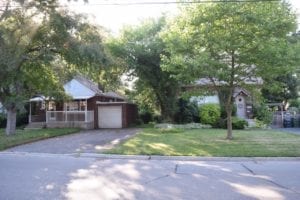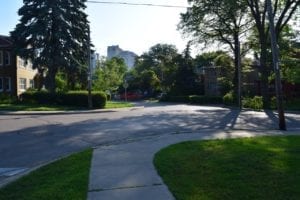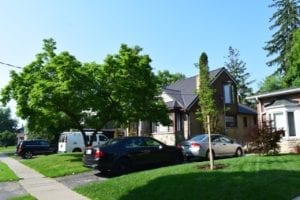News regarding land use planning as it relates to 11 & 15 Stanley Ave. in Mimico continues on a positive note
News update (Dec. 12, 2019): The news regarding 15 Stanley Ave. is also on a positive note. Click here to access recent decision regarding 15 Stanley Ave.:
15 STANLEY REVIEW DECISION – LOMBARDI
[End of update]
Click here to access a recent land use (Toronto Local Appeal Body) decision regarding 11 Stanley Ave.:
11 Stanley – Review Decision -Lombardi
An excerpt (p. 18; the emphasis, in the first paragraph that follows below by way of bold typeface, is as in the original) from the decision reads:
I am not satisfied that the Member made any significant error, factual or legal, by not allowing the Motion to Adjourn or by refusing to allow the introduction of Arborist’s Report or on the evidence available and before him at the time. I also find that the Member was not deprived of new evidence which was not available at the time of Hearing Day 1, but which would likely have, if allowed, resulted in a different order or decision. I agree with the Appellant that the Affiant is attempting to fault the Member for what could be termed “a failing of the Applicant and her representative.”
The evidence in this proceeding suggests that the Applicant had numerous opportunities to deal with urban forestry matters going back to the COA hearing when Urban Forestry staff submitted clear opposition to the application and requested a deferral on that basis. The impact of the proposal on trees was also a common theme in many of the Participant Statements filed with the TLAB and it appeared to be a critical component of Ms. Sheasby-Coleman’s disclosure documents. Furthermore, the Applicant should have been alerted to the importance of urban forestry issues given that the Appellant filed a Request to Summons Dr. Dida.
I also note that it appears the decision by Chair Lord regarding the application for 15 Stanley Avenue impacted the strategy developed by the Applicant in approaching the matter of the impact on trees as part of the subject application. This is clear in that the Applicant stated, and I paraphrase, that they were seeking an adjournment because they were not prepared to deal with the trees, given the decision of Mr. Lord in his 15 Stanley decision.
Previous posts about 11 Stanley Ave. in Mimico
Click here for previous posts about 11 Stanley Ave. >
We await news regarding a potential appeal to the Divisional Court.
Among the above-noted lists of posts is one that offers one glimpse (among many glimpses, which have been offered by many residents) of what a person sees when walking down Stanley Ave.
I wrote the post when I was still living in Long Branch; I now live in Stratford.
The latter post is entitled:
What you see walking down Stanley Ave.
The text of the above-noted post reads:
Below is a text (to which I’ve made minor copy edits) of my letter of objection sent to the Toronto Local Appeal Body regarding lot-splitting / overbuilding proposals at 11 & 15 Stanley Ave. in Mimico:
Comments regarding TLAB hearing: 11 & 15 Stanley Ave.
July 5, 2018
I am pleased to have the opportunity to comment regarding 11 & 15 Stanley Ave., albeit my comment is past the due date. I learned about these applications just recently.

The proposed lot-split / overbuilding projects are located at 11 and 15 Stanley Ave. in Mimico. Jaan Pill photo
Proposed lot-split / overbuilding projects at 11 & 15 Stanley Ave.
During the 21 years I have lived in south Etobicoke [we sold our house in Long Branch in July 2018], I have like many residents been observing local land-use history, as it has been unfolding.
My interest in these matters is based on my role as a blogger and writer.
Other south Etobicoke residents, living closer to the lot-split / overbuilding proposals at hand in Mimico, have shared objections related to numbers related to the proposed variances.

Lots on nearby streets appear to be consistently large with wide sideyard and backyard setbacks. Jaan Pill photo
Given a trend in the culture of land-use decision making going back 25 years, as I’ve outlined at my Preserved Stories website, whereby quantitative measures are frequently disregarded when decisions are made, I will not belabour the point, regarding numbers.
As a rule, from what I have observed over many years of hearings, numbers do not appear to have a great deal of meaning to decision makers addressing land-use planning in south Etobicoke.
Occasionally, there are exceptions, which are a source of some small amount of encouragement for residents such as myself.
Emphasis and framing
Instead of dealing with numbers, I will focus on emphasis and framing.
By way of example, the Floor Space Index is a numerical term, but it is also manifests itself as a visual impression – related to massing – that impinges strongly upon the viewer, when she or he is walking down the street.
In visual terms, in many neighbourhoods in south Etobicoke, where wide sideyard and backyard setbacks tend to be the norm, given a previous era of land-use planning, a large FSI presents itself, visually speaking, as what a reasonable observer, walking down the street, would characterize as overbuilding. I mention that by way of explaining why I speak about lot-splitting / overbuilding.
If large FSIs were to be the norm in south Etobicoke, as they are in some other Toronto neighbourhoods, then the term “overbuilding” would not apply.
38 Thirty Sixth St.
With regard to emphasis and framing, I was impressed with the narrative by Ian James Lord, discussing the TLAB decision of March 19, 2018 regarding 38 Thirty Sixth St. His decision was based upon his assessment of the framing, of the competing narratives. I strongly agree with the reasoning behind the decision.
“In opening remarks” at the hearing for the latter proposal, Mr. Lord notes, “the contrasting positions were succinctly stated by counsel for the Parties. Namely, new lots optimizing in a modest way the efficient use of land through modest intensification; versus, it is not good planning to permit oversized homes on undersized lots that do not ‘fit’ the neighbourhood and result in a diminution of the urban forest.”
11 & 15 Stanley Ave.
I have taken a walk in the neighbourhood and have taken photographs to highlight what I see.
What I see is a characteristic form of massing and scale, to which the proposed consents and variances appear to my eye to be an exception, that does not fit with the prevailing look and feel of the neighbouring streetscapes. Lots on nearby streets appear to be consistently large with wide sideyard and backyard setbacks.
Planning department comments
I am very dubious, with regard to the “no objection or concern” comments from the planning department. No rationale is provided for such statements, and that fact, from my perspective as a resident, is an issue.
I am also dubious – with regard to what the planning department chooses to frame or emphasize, by way of contributing to land-use deliberations – because of a misleading statement, which was directed my way, in my role as a blogger, by two city staffers, one of whom is a planner, at an April 4, 2018 meeting of the Long Branch Neighbourhood Association.
I’ve written a preliminary post at my Preserved Stories website, regarding the April 4, 2018 meeting, which was concerned with the potential impact of the Long Branch Character Guidelines on Committee of Adjustment and TLAB planning decisions.
From what I can gather, from reading a couple of recent TLAB decisions, the Guidelines have no impact on decision-making with regard to the latter appeal body. That point aside, the Guidelines are not the subject of my letter of objection.
My preliminary post, with regard to the culture of land-use decision making in south Etobicoke, is entitled:
As I note at the post, dated April 9, 2018, on April 4, 2018 I attended a public meeting organized by the Long Branch Neighbourhood Association, at which city staffers spoke about how the Character Guidelines may, or may not, affect future land-use planning decisions in Long Branch.
At that meeting, I was most interested to learn that, according to two city staffers, I was not permitted to record what city officials said at the meeting, nor was I permitted to post any direct quotations of what staff said at the meeting, based on my notes, without first getting permission from media relations at the City of Toronto.
After the meeting, I contacted media relations and asked if the above-noted prohibition was, in fact, City of Toronto policy. Among other things, I asked: “Does a person need to get permission from the city before remarks by city staff at a public meeting can be recorded?”
The answer was: “No. Information provided by city staff to the public at a public meeting is a matter of public record. As a courtesy, you may want to advise staff that you are present as a blogger or member of the media but that is not a requirement.”
The thought that stays in mind for me, with regard to this discussion with city staff, is that if a person is in doubt about a statement, by any person regarding any topic, it’s a great idea to seek verification of it.
In this case, with regard to the 11 & 15 Stanley Ave. proposals, the planning department has indicated that, in its view, there are no objections to be made. No rationale is provided.
Such a statement does not warrant the provision of a great deal of weight, given that evidence does exist, which underlines that residents have good reason to object, to the proposals.


Leave a Reply
Want to join the discussion?Feel free to contribute!